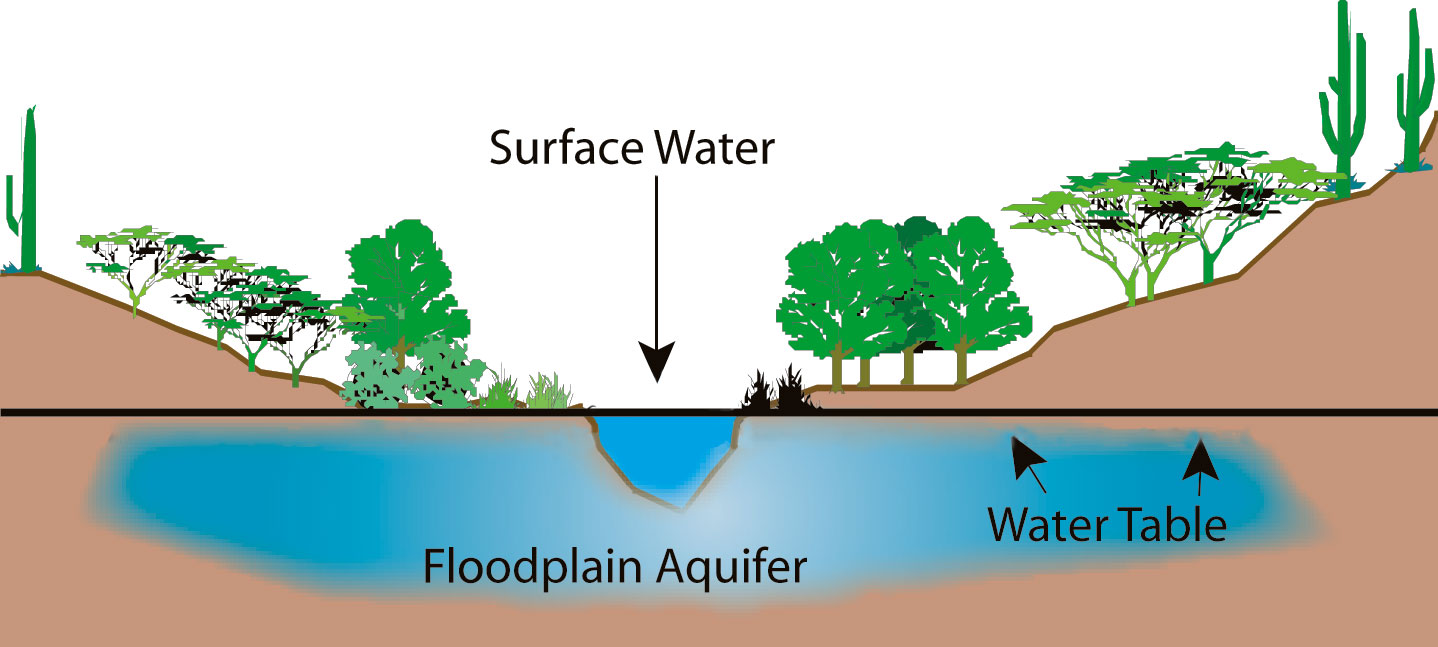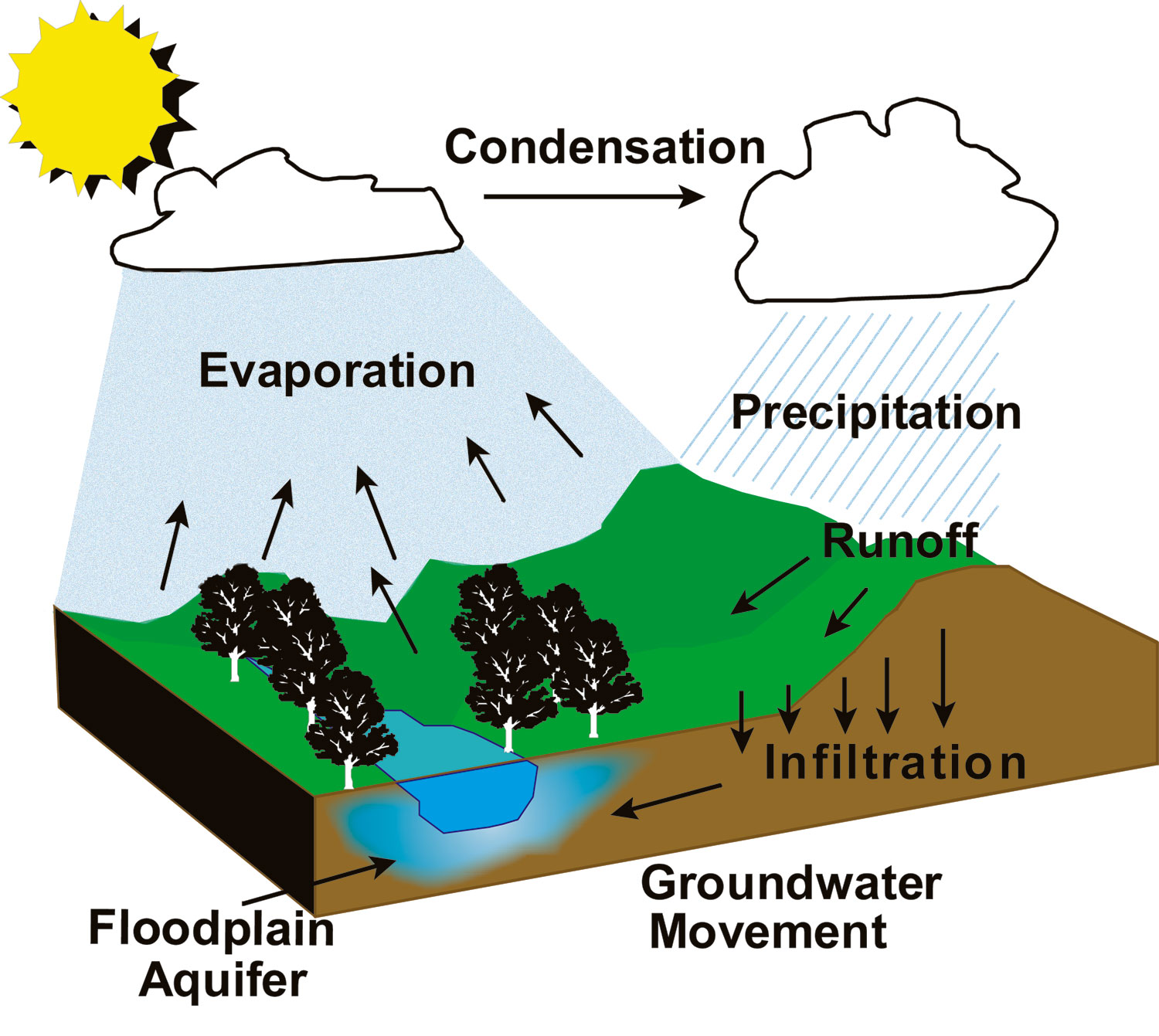Surface and groundwater

In many rivers, the water you see (surface) is only a small part of the picture. If you visualize the water in the channel extending away from the stream underground. This is the groundwater or water table. Many plants grow away from this channel and obtain water from the water table. Shallow-rooted trees such as cottonwood and willow depend on a higher water table and grow closer to the stream, whereas trees like mesquite have deeper roots and can grow farther away from the stream.
Water cycle
Water is always changing from one form to another. When it rains the water can either percolate into the soil and become groundwater, or if it doesn’t soak into the soil it can become surface runoff. The runoff then drains into a body of water and become surface water. Groundwater can also become surface water when it moves into the channel. The plants soak up the water through their roots and it the goes into the atmosphere through evapotranspiration and the cycle starts again.
In the past, and even today, many riparian forests have been cleared in the erroneous believe that much water could be salvaged or saved for human use by reducing the amount of water transpired by plants and evaporated from the soil. We are now aware of the high value and importance of riparian vegetation. The trees and shrubs help shade streams, thus cutting down on evaporation from the soil or water surface. Grasses and herbaceous plants help retain moisture in the soils by stabilizing them so more water can percolate through to the groundwater.
